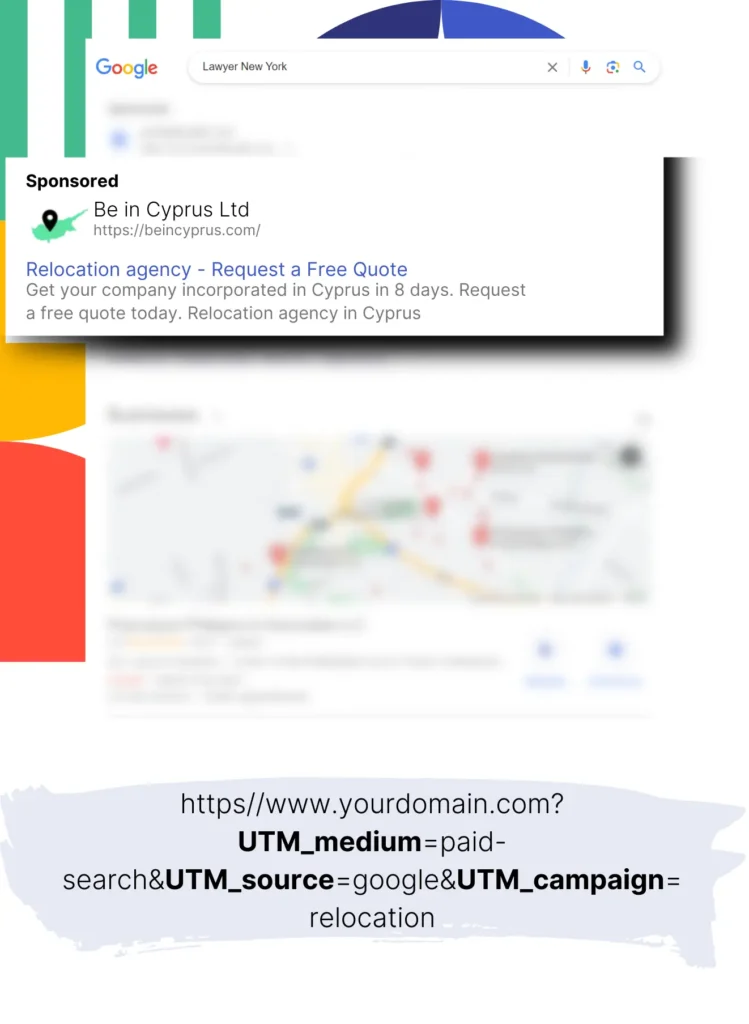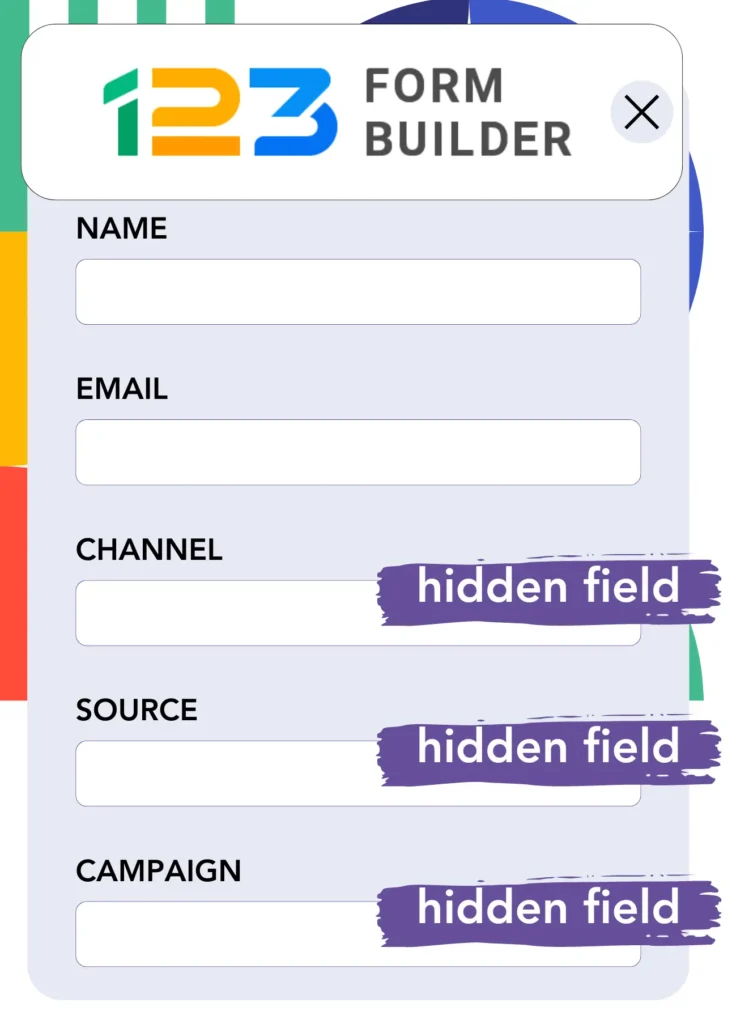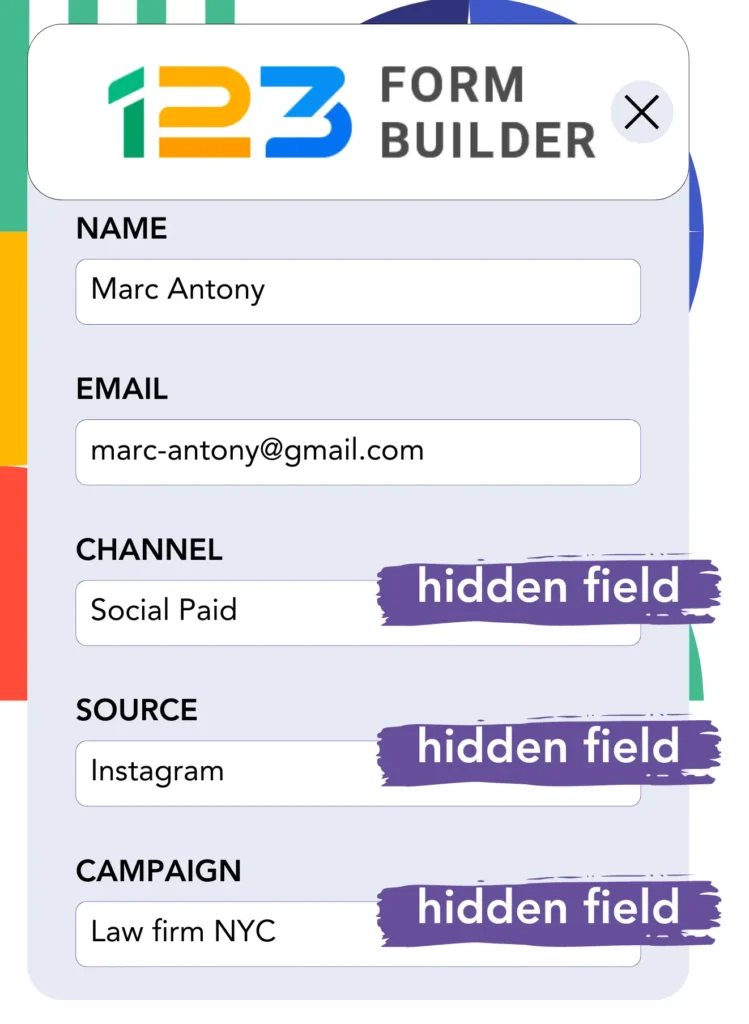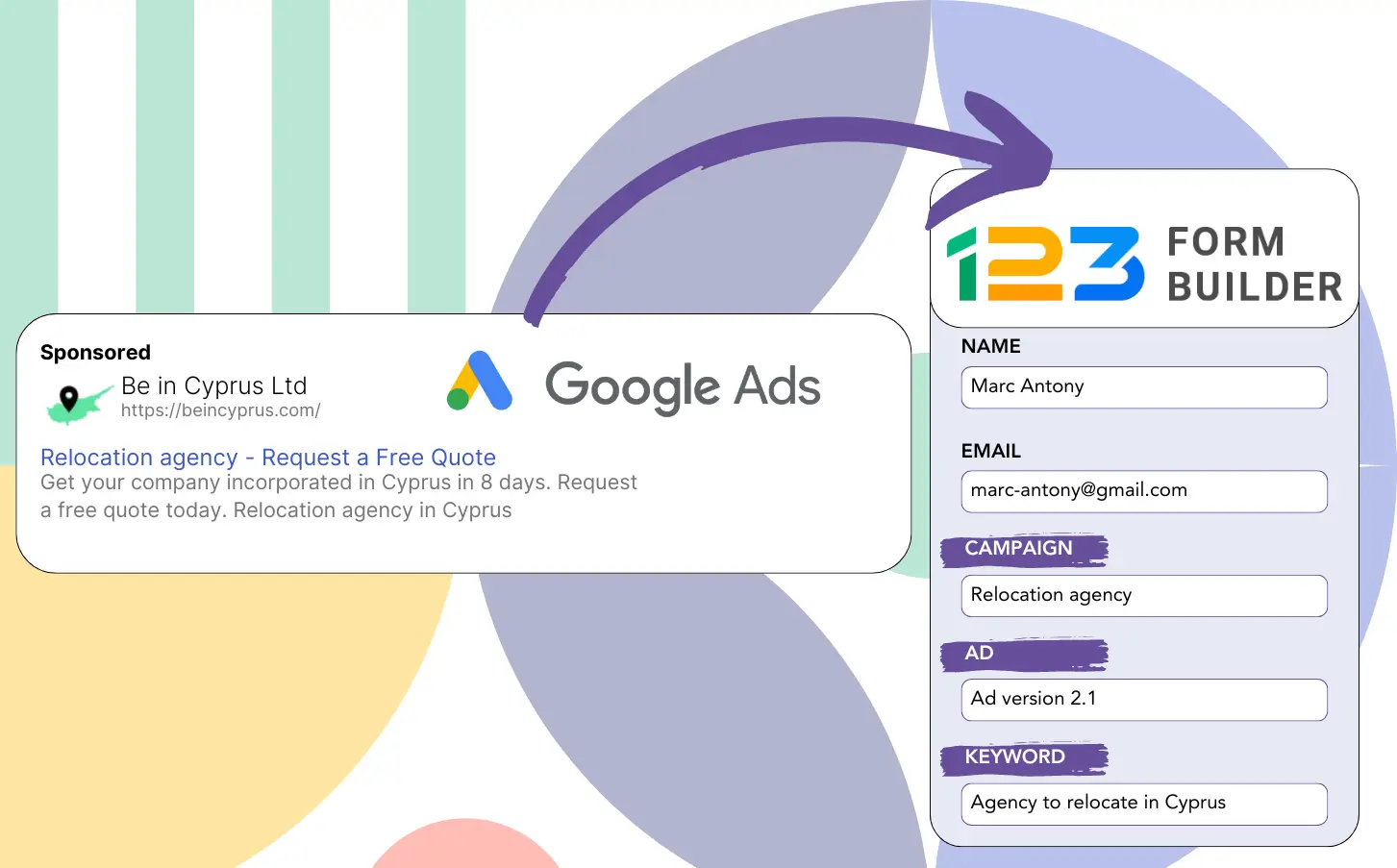Do you have difficulty understanding which campaigns in Google Ads are producing your leads?
This issue is well-known: Google Ads provides total leads from campaigns, ads, or keywords but does not offer specific lead-level information.
Therefore, you can’t determine which campaign, ad, or keyword generated the leads that converted to customers.
Leadsources handles this problem effectively.
With Leadsources, you gain the ability to track your Google Ads data, including campaigns, ads, and keywords, on a lead level.
123FormBuilder will then store detailed Google Ads data, including campaign, ad, and keyword information, for each lead generated.
This enables you to run reports like “Keywords that generated the most leads” and make informed decisions on which keywords to promote or drop.
Let’s dive right in!
Capture Google Ads lead data in 123FormBuilder in 4 steps
Step 1: Add Leadsources in the head tag of your website

Sign up to Leadsources.io, and benefit from our 14-day free trial.
Insert the Leadsources code in the head tag of your website. No coding skills necessary.
Simply follow this easy step-by-step guide.
Step 2: Add the UTM parameters to your Google Ads campaigns

Integrate the UTM parameters for tracking into all your Google Ads campaigns.
You can add these UTM parameters to your ad for tracking purposes:
- UTM_source
- UTM_campaign
- UTM_term
- UTM_content
Leadsources collects more data than UTM parameters, such as channel, landing page, and landing page subfolder, to deliver a complete lead-level analysis.
Step 3: Add the hidden fields in 123FormBuilder

When visitors complete your 123FormBuilder (name, email, etc.), Leadsources automatically fills the hidden fields with Google Ads information (campaign, ad, keyword, landing page, etc.).
Use this step-by-step guide to add hidden fields to your 123FormBuilder to complete this process.
Google Ads information will be directly entered into your 123FormBuilder by Leadsources.
Step 4: Capture the Google Ads data in 123FormBuilder

As visitors click on your Google Ads ad and land on your page, Leadsources collects Google Ads information (campaign, ad, keyword, landing page, etc.).
The hidden fields of your 123FormBuilder receive Google Ads data automatically through Leadsources.
Following form submission, the Google Ads data, along with the form responses, are forwarded to the 123FormBuilder submissions page.
How does Leadsources work?
When the Leadsources code is included in the head tag of your site, it will capture Google Ads data (UTM parameters and referrer) with each site visit.
The Google Ads data is stored in the hidden fields of your 123FormBuilder for further use.
Visitors without UTM parameters in the URL will have their data collected by Leadsources through the referrer:
- Channel
- Source
- Campaign
- Landing page
- Landing page subfolder
With this approach, you can still monitor essential lead source details even when UTM parameters are missing, such as:
- On Google Search
- On your Instagram bio link
- On your social media posts
- Etc.
Most lead tracking solutions rely on UTM parameters to capture data, mainly for paid and referral channels which this leads to an issue.
Leadsources ensures that lead data is captured from all channels, regardless of whether UTM parameters are present:
- Organic Search
- Paid Search
- Organic Social
- Paid Social
- Referral
- Affiliate
- Display Advertising
- Direct Traffic
This makes it possible to consolidate all lead source data into one central place for easier management.
Pro tip:
Track Google Ads data in all the popular online form builders, including Cognito Forms, Gravity Forms, Jotform, Typeform, WPForms, and more. Learn how to add Google Ads UTM parameters in any form builder.
How to run performance reports
By storing Google Ads data in 123FormBuilder, you can now create performance reports such as:
- Leads per campaign
- Leads per ad
- Leads per keyword
- Etc.
This ensures you can make sound decisions about your Google Ads financial allocation.
We’ll review the range of reports you can draft.
Lead performance reports
Reports can be made to display the lead volume associated with:
- Channel
- Campaign
- Ad
- Keyword
- Landing page
- Landing page subfolder
Example #1
You can produce a report called “Leads by Channel” by exporting data from campaigns across different marketing channels (SEO, PPC, email, etc.).

Example #2
After identifying the channel that produces the most leads (e.g., Google Ads), you can select it to view the lead counts for each particular ad campaign.

Example #3
Once you’ve identified the leading campaign, you can further explore which particular keywords are generating the most leads.

Sales performance report
Identifying the most effective ads and keywords for lead generation is helpful, but do they also impact your revenue?
Integrating your 123FormBuilder data with a CRM allows for the creation of valuable sales reports.
Example:
| Channels | Search Paid | Social Paid |
| Leads | 50 | 75 |
| Sales | 5 | 6 |
| Average order value | $150 | $100 |
| Revenue | $750 | $600 |
Social Paid ads produced a greater number of leads than Search Paid ads in your campaigns on Google and Facebook.
The analysis over the past few weeks revealed that Search Paid campaigns delivered more revenue with fewer leads than Social Paid campaigns, leading to a decision to increase the budget for Search Paid ads.
LeadSources tracks the source of each lead in 123FormBuilder, whether they come from ads, organic search, social, email, etc. and syncs that data with each submission. See the full breakdown on the lead source in 123FormBuilder page.

